Construction Basics
If you have questions not covered in these send us an EMAIL or call us at 704-799-7575
Material Selections
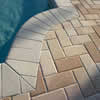 Everything from glass and ceramic tiles, brick pavers or travertine deck, coping, stone veneer, and interior finish.
Everything from glass and ceramic tiles, brick pavers or travertine deck, coping, stone veneer, and interior finish.
Your tile should be applied as described in the tile application portion of the construction basics page. Additionally it is important to select a tile that is designed to be used in wet areas as well as the ability to withstand freezing temperatures and the elements.
For the pool deck area I prefer sand set materials. Sand setting pavers or travertine not only gives you a richer feel and aesthetic advantage but sand set materials can also move with the ground and unlike concrete you won’t have cracking or patching. Another advantage is for any reason you need to go under the deck area, you can simply pull up the pavers and reset them or add deck space in the future without having a patch or unsightly addition. It will go together seamlessly.
You can have a standard paver installed for about the same price as a concrete deck.
Shortcrete vs Gunite
 Often times the terminology “shotcrete” is misrepresented. There is good reason for that. Because technically both shotcrete and gunite fall under the same classification called shotcrete.
Often times the terminology “shotcrete” is misrepresented. There is good reason for that. Because technically both shotcrete and gunite fall under the same classification called shotcrete.
The term generally refers to the basic application of either gunite (sand & cement) or shotcrete (sand, cement & larger stone aggregates), being applied pneumatically, transferred or conveyed through a hose and applied by pressure.
Although in some cases the PSI rating of gunite can be higher than that of concrete in the North Carolina soils & substrates concrete has performed better, has better tensile strength and better structural properties in my experience. The gunite procedure is more prone to failures in my opinion. The only real advantage to gunite is that it’s cheaper!
Steel Reinforcement
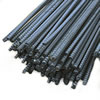 #3 rebar is most commonly used to reinforce pools nationwide. Size and placement of reinforcing bars or rebars is critical to the structural integrity of your pool. We recommend at least #3 rebar on the vertical walls with 10″ x 10″ on center spacing with a tie at every intersection. We recommend #3 on the floor running the width of the pool and #4 running the length of the pool, again on 10″ x 10″ on center spacing with a tie at every intersection. In most cases there are needs for larger steel bars and tighter spacing as well as multiple layers or mats of steel.
#3 rebar is most commonly used to reinforce pools nationwide. Size and placement of reinforcing bars or rebars is critical to the structural integrity of your pool. We recommend at least #3 rebar on the vertical walls with 10″ x 10″ on center spacing with a tie at every intersection. We recommend #3 on the floor running the width of the pool and #4 running the length of the pool, again on 10″ x 10″ on center spacing with a tie at every intersection. In most cases there are needs for larger steel bars and tighter spacing as well as multiple layers or mats of steel.Coping & Stone Veneers
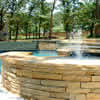 There are many types of coping available for pools, such as flagstone, precast, brick, and poured in place copings and others.
There are many types of coping available for pools, such as flagstone, precast, brick, and poured in place copings and others.
The most common is flagstone, followed closely by precast then brick and so on. All coping should be applied with the same principals as setting tile using a thinset or bonding agents to promote adhesion.
Any exposed edges on flagstone coping should be chiseled to give it a finished look and eliminate sharp edges. It is the most natural looking coping. Precast is custom casted to fit your pool, templates should be made to assure proper fit and finish. The edges of precast are typically smoother or less jagged than flagstone and will come in a variety of colors. Precast coping is typically more expensive than flagstone or brick. Brick coping is a more traditional or old school coping. These bricks are specifically designed for use as a pool coping with bullnose edges and smooth textures. Proper cutting of brick on corners or through any radius is a must for a nice, clean, custom fit & finish.
I recommend cutting every brick on radius exactly the same to make for a consistent brick size and grout joint sizes. So many times I have seen other companies that don’t cut these bricks and the grout joints and bricks vary in size. This looks sloppy and unprofessional
Hydraulics
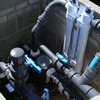 Pipe sizing is very important not only for the proper flow and efficiency of your equipment, but it is the key to the proper function of your sanitation devices, heaters, filtration, spa jets & water features. The one size fits all theory doesn’t work here! Hydraulic calculations using distance from pool and features, number of features and outlets, and turns or bends between equipment location and each feature will determine pipe size. Of course, there are always other factors to consider. If you have specific questions, contact us!
Pipe sizing is very important not only for the proper flow and efficiency of your equipment, but it is the key to the proper function of your sanitation devices, heaters, filtration, spa jets & water features. The one size fits all theory doesn’t work here! Hydraulic calculations using distance from pool and features, number of features and outlets, and turns or bends between equipment location and each feature will determine pipe size. Of course, there are always other factors to consider. If you have specific questions, contact us!Interior Finish
 First, let me say that there are simply no cementatious interior finishes out there that are perfectly smooth. If you spend enough time in the water particularly if you are playing games or rough housing, you will get little “raspberries” or sore spots on your feet and toes.
First, let me say that there are simply no cementatious interior finishes out there that are perfectly smooth. If you spend enough time in the water particularly if you are playing games or rough housing, you will get little “raspberries” or sore spots on your feet and toes.
We use a product called pebbletec. It is classified as an exposed aggregate finish. Even though the stone aggregate is exposed, the stones themselves are rounded and not abrasive. The beauty of pebbletec finish is it’s greatest feature along with it’s 15 yr. warranty. Pebbletec comes in a variety of colors. Another product we are using is an exposed aggregate which is buffed with a buffing tool after it is applied to give the smoothest interior finish available in a concrete pool! I will tell you more about this via the blog or by appointment, as we are the only pool company currently offering this product. I want to keep this exclusive as long as possible.
Finally a traditional or basic plaster finish that can be done in color or white. It has a smooth surface but no exposed aggregate in it. It looks clean and is the least expensive of all interior finishe
Tile Application
 Believe it or not, different types of tiles require different application procedures. For example, a typical thin set used to apply a 6×6 ceramic tile will not work for glass tiles. All waterline tile areas, wet areas with stone/tile or the like should be water proofed prior to application of any materials! An approved advanced water proofing system should be used.
Believe it or not, different types of tiles require different application procedures. For example, a typical thin set used to apply a 6×6 ceramic tile will not work for glass tiles. All waterline tile areas, wet areas with stone/tile or the like should be water proofed prior to application of any materials! An approved advanced water proofing system should be used.
It is my recommendation that all tile be applied with a setting material that includes a polymer bonding agent. When installing glass tile, it is imperative to use a thinset and grout that is specific for the application and contain polymers as well.
Pool Cleaning Options
 We recommend the PV3 infloor cleaning system by Paramount Industries. (You will find their link on my equipment page) This is a custom built infloor cleaning system. Built into the floor, steps,, benches, etc. of your pool. It runs off of the pools existing hydraulic system, but must be installed during construction.
We recommend the PV3 infloor cleaning system by Paramount Industries. (You will find their link on my equipment page) This is a custom built infloor cleaning system. Built into the floor, steps,, benches, etc. of your pool. It runs off of the pools existing hydraulic system, but must be installed during construction.
Another good option is the Polaris 9300 series. These are electronic, computer driven robots that clean your pool. You can see them at polarispool.com
And finally there are cheaper pressure pool vacs that work okay, but you get what you pay for here.
Sealants & Waterproofing
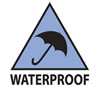 All wet areas including rocks, waterfalls, tile areas, flagstone, etc. that is designed to be underwater or wet at anytime should be sealed with an approved, advanced sealing or waterproofing agent.
All wet areas including rocks, waterfalls, tile areas, flagstone, etc. that is designed to be underwater or wet at anytime should be sealed with an approved, advanced sealing or waterproofing agent.Salt Water Pools
 The salt levels required to operate these systems are so low that you can hardly even detect any salt in the water (it’s nothing like swimming in the ocean).
The salt levels required to operate these systems are so low that you can hardly even detect any salt in the water (it’s nothing like swimming in the ocean).
The way this system works is… Via salt in your pool water, passing water through titanium plates that give off a small electrical charge. causes the sodium chloride (which is salt) to divide. Once sodium and chloride divide the sodium remains the same but the chloride becomes chlorine. The truth is, it’s still a chlorinated pool. However the advantage is, (unlike a traditional chlorinator) the salt system renews the chloramines in the pool water (chloramines are expired chlorine molecules that have used their energy sanitizing, but remain in the water inactive. They will accumulate and this is what causes green hair, itchy skin, red eyes, chlorine smell, etc.)
The salt system renews these chloramines therefore eliminating all those undesirable side effects while producing chlorine to sanitize.
